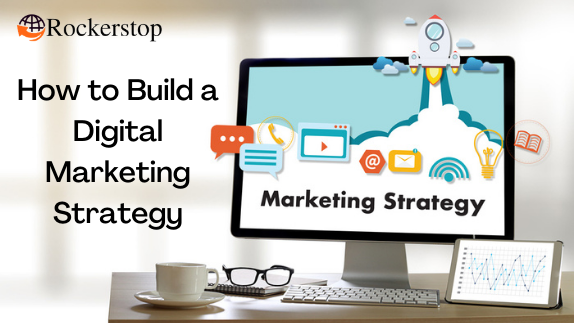6 Ways to Make Digital Marketing Strategy
Today, most of our content utilization takes place within the digital world. This change needs your brand to possess a presence within the digital world. In order to create a successful digital presence for your brand, you would like to possess a solid digital marketing strategy.
“Digital marketing strategy” may be a term that encompasses an entire lot. It is often overwhelming to tackle it on your own.
A digital marketing strategy may be a step by step, usable procedure that works towards achieving the digital marketing goals of your company.
Digital marketing is accomplished through digital marketing channels. These channels cover social media, digital publishing and paid, earned or owned media.
A digital marketing strategy includes a really thoughtful decision-making process regarding your digital marketing objectives and therefore the most appropriate channels which will assist you achieve them.
This is why we’ve created this practical guide to assist you build a solid digital marketing strategy in below steps:
1. Set your Objective
Before you begin strategizing, you want to ask yourself what it’s that you simply hope to realize together with your marketing strategy. Sounds easy, but this step needs you to return up with a really more specific set of goals.
2. Check your Existing Digital Marketing Presence
This step will assist you understand what to specialise in to realize your current goals.
First, you would like to know your main marketing channels:
- Your website
- Social media
- Email marketing
- Content marketing/SEO
- Pay per click advertising
3. Understand the Digital Sales Funnel
The digital sales funnel is that the arc of your customer journey from unknown to a client, or future customer. A brand with a powerful digital presence can use the funnel to understand their digital marketing objectives. How? By addressing each step of the funnel with the suitable digital marketing tools.
Understanding the digital sales funnel means you would like to understand each stage of the funnel and therefore the appropriate digital tools that enhance it.
Here may be a simplified breakdown of the stages and therefore the appropriate digital marketing responses.
Awareness
Make potential clients aware of your existence. For example, through ads on social media or ranking good in search engines.
Interest
Raise interest about your brand. Who are you and what makes you different from your competition? Some most used digital tools for this step are features about your brand in digital publications and videos.
Engage
Solidify your relationships. Sponsored posts on social media that address concerns the client could have or encourages them to ask questions may be a useful gizmo for this stage.
Action
Do business with the client. A tool for this stage is implementing calls-to-action for the client to form a sale . For example, incentivizing a sale by offering discounts in ads or emails for the client.
4. Find your Customers on the Funnel
You then got to locate your customers at different stages of the funnel. In all likelihood, there’ll be customers in the least stages of the funnel who are hospitable connecting with you.
5. Make a Good Content Plan
At this stage, you’ll develop a selected marketing strategy for each channel that draws your customers. What kind of content does one get to achieve your digital marketing goals for every of those channels?
Your strategy is going to be made from a series of actions that answer specific goals. It will even have a selected timeline in order that the actions can have measurable deadlines.
Some of these actions will be:
Developing a keyword strategy: identifying important keywords to enhance SEO.
Creating a content calendar:
This will permit you to have long-term and easily traceable objectives. Your content calendar will be very specific. Each usable item will involve author, publication date, keywords, topic and tags.
There should be a digital marketing objective for each month. For example, starting in January, you’ll feature bi-weekly posts on your blog on a selected theme.
Posting on social media: use research you’ve conducted to determine what kind of content you ought to post on which social media channels and the way often you ought to do so.
Using CTA’s and widgets: it’s crucial to incorporate CTAs and widgets in your digital marketing content to permit customers to simply engage with you and your products.
Marketing automation tools: Once you’ve got your content strategy down, these tools are an excellent thanks to save time and be efficient.
6. Examine Results
Once you’ve got a technique, practice this step at intervals (add it to your calendar). How are clients interacting with what you’re sharing with them? How are you progressing toward your goals? These analytics will assist you to correct course and learn from things that didn’t compute as planned.
By using analytics software you’ll observe your progress at different stages of the funnel. You want to understand:
If clicks are turning into conversions. Is there mobility across the funnel? Why or why not?
If there’s some extent where you’re losing engagement with customers. What’s the rationale and the way are you able to fix it?
What’s working well—and what’s not.
Keep up with the newest digital marketing tools, there could be something new on the market that addresses your analysis needs perfectly.
With the results you gather, you’ll create graphics using data visualization tools which can help with comparisons, goal tracking and presentations.
Also Read How to Build Brand Awareness
